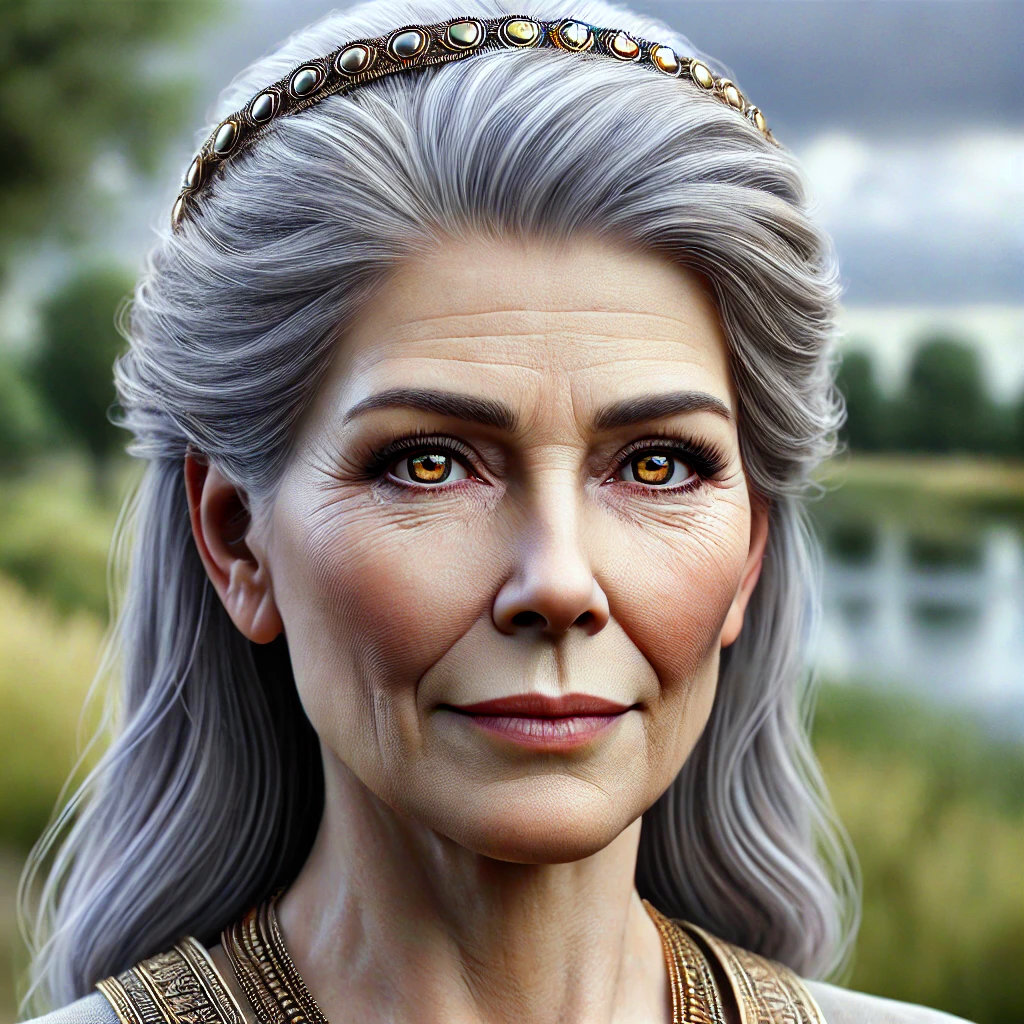 Ninhursag's Appearance
Ninhursag's Appearance
Ninhursag is the Sumerian mother goddess and goddess of the earth. She is described as experienced and kind-hearted. She was initially the wife of An and became the wife of Enki after separating from him. Her age should therefore lie between that of An and that of Enki. She is therefore depicted as a 70-year-old woman. In depictions, she is often shown wearing elaborate garments and jewelry that emphasize her high status and divinity. These garments can be richly decorated.
 Ninhursag's Personality
Ninhursag's Personality
Ninhursag embodies a motherly care for the animals, plants and people on earth. She is described as a wise and powerful goddess. Her wisdom and power make her a respected and revered figure in the Sumerian pantheon. As described in the myth Enki and Ninhursag, she disciplines those who disobey her commandments and disturb the natural order. She often acts as a mediator and balancer, maintaining the balance in nature and in the relationships between the gods and humans. She plays a crucial role in harmonizing conflicts and restoring peace. An example of this is the role she plays after the Flood in the Epic of Atrahasis.
 Ninhursag's Duties as a Goddess
Ninhursag's Duties as a Goddess
Ninhursag acts as the protector of nature and the creatures that live on earth. She is the personification of the earth. Together with her husband Enki, she made the earth fertile and created humanity. She ensures that the earth remains fertile and that all living creatures that live on it can thrive. As the goddess of fertility, she ensures the fertility of the earth, the growth of plants and the abundance of the harvest. This role was considered crucial for ensuring prosperity and food security in the agricultural society of Mesopotamia.
Her caring role is also reflected in her function as a healing goddess who can alleviate illness, bring healing and oversee births. She possesses healing powers and is responsible for the health and well-being of humans and animals. In conflicts, she is a balancing force that restores peace and order.
The Epic of Atrahasis also describes Ninhursag as being able to extract the spirit of a person or the spirit of an Igigi, so that it continues to exist independently of the body after its death.
 The Career of Ninhursag
The Career of Ninhursag
Ninhursag, the goddess of the earth, was initially the wife of An, the god of the sky. Together they had their son Enlil. In the myth Enki and Ereshkigal, it is mentioned that Enlil caused the separation of Ninhursag and An, whereby the sky separated from the earth and the earth as we know it came into being.
However, Ninhursag, the goddess of the earth, could produce nothing but dry wasteland without Enki, the god of fresh water. She therefore married Enki and together, in the myth Enki and Ninhursag, they first created the paradisiacal land of Dilmun and later the whole of Sumer. This earned her the title "Aruru" (creator).
According to the Myth of Anzu, after Ninhursag had created humans, she gave her son Enlil the tablet of destiny, which defines the rites of the Igigi. Enlil used it to commission the Igigi to build the canal system and the first cities.
Later, Ninhursag, in collaboration with Enki (who is also the god of wisdom), gave people intelligence. This is described in the Epic of Atrahasis. As humans were now intelligent, they were able to take over the work of the Igigi. Ninhursag had thus freed the Igigi from their workload. In return, she received the title "Belet-ili" (mistress of the Igigi gods) from them.
After the Sumerian civilization was created, according to the myth of Enki and the World Order, supervising births became Ninhursag's main task, which earned her the title "Mami" (mother goddess).
However, around 2900 BCE, when the population of Sumer increased too much, Enlil sent them the Flood to reduce the human population size. According to the Epic of Atrahasis, after the Flood, Enki and Ninhursag were forced to take measures to reduce the fertility of the people in order to control population growth. Births were no longer supervised by Ninhursag and the Pasittu demon was allowed to snatch the child from the mother's womb.
Ninhursag's role in resolving conflicts and restoring peace is also evident in the Myth of Anzu, when she instructed her son Ninurta to take back the tablet of destiny from Anzu, which he had stolen.


